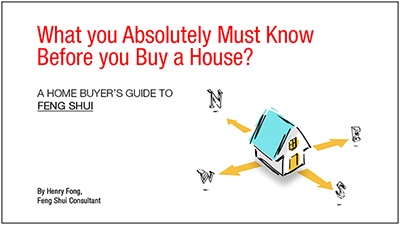by Master HC Hung
Location location location, that’s the battle cry of today’s real estate business. Interestingly the same could have been an issue with the Wandering Stars of 8-Mansions fengshui, albeit in a different context.
Of late much interest has been expressed, under various forums, on the interplay of elements between the Wandering Stars and the Palaces they land on. The discussions prompted me to look up what the classical texts and other writers have to say, and in the process unearthed a plethora of divergent interpretations. I am happy to share my findings herein, and in the concluding paragraphs, table my own view and the reasoning behind.
As this paper is an attempt, feeble as it may be, at academic research, I dearly welcome comments and criticisms, all in the spirit of advancing our knowledge of 8-Mansions fengshui. Chinese writers are fond of using the phrase “throw out a brick to attract jade”. Whilst this may be labelled “unrealistic profit expectations” in today’s world, it’s a nice thought.
The classical name of the topic being discussed is “gong xing sheng ke” (宫星生克), which may be simply translated as “elemental interplay between Palace and Star”.
Background
Whereas the 8 Wandering Stars: shengqi, tianyi, yannian, fuwei, huohai, liusha, wugui and jueming are taught at a fairly basic level in the study of 8-Mansions, less attention is paid to the fact that these Stars have intrinsic elements, and that the interplay between the element of the visiting Star and the element of the host Palace will affect the strength of the Star.
The 8 Wandering Stars, the heavenly stars associated with them, their respective metaphysical elements and polarity are tabulated below:
| Wandering Star (游星) | Heavenly Star (天星) | Element | Polarity |
| shengqi (生气) | Greedy Wolf (贪狼) | Wood | yang |
| tianyi (天医) | Hugh Door (巨门) | Earth | yang |
| yannian (延年) | Military Arts (武曲) | Metal | yang |
| fuwei (伏位) | Left & Right Assistants (辅弼) | Wood | yin |
| huohai (祸害) | Rewards (禄存) | Earth | yin |
| liusha (六煞) | Literary Arts (文曲) | Water | yang |
| wugui (五鬼) | Chastity (廉贞) | Fire | yin |
| jueming (绝命) | Broken Soldier (破军) | Metal | yin |
The first 4 (shengqi, tianyi, yannian, fuwei) are the good guys, and the other 4 the baddies. That’s common knowledge, but how good or how bad? That will depend on where the Star lands in the luoshu (洛书) diagram, i.e. which Palace. The extent to which the Palace, as host, affects the Star, as visitor, is open to interpretation, and opinions do diverge widely between writers.
The luoshu Palaces need no introduction, but the following table is included for easy reference:
| Location | luoshu Number | Palace name | Element | Polarity |
| Northwest | 6 | qian(乾) | Metal | yang |
| North | 1 | kan (坎) | Water | yang |
| Northeast | 8 | gen (艮) | Earth | yang |
| East | 3 | zhen (震) | Wood | yang |
| West | 7 | dui (兑) | Metal | yin |
| Southwest | 2 | kun (坤) | Earth | yin |
| South | 9 | li (离) | Fire | yin |
| Southeast | 4 | xun (巽) | Wood | yin |
This is what the classics, and other masters more learned than I, have to say:
8-Mansions Bright Mirror (八宅明镜):
Probably the best known of the 8-Mansions classics, the work is often attributed to the Taoist monk Ruo guan (箬冠道师) who lived in the early Qing Dynasty. The version that survived has a preface dated 1790 in which the writer said he obtained a copy from Ruo, but did not say Ruo actually wrote it.
” … Palace is internal, Star external. Partially negative if internal counters external, totally negative if external counters internal. yang Star countering yin Palace will harm females, whereas yin Star countering yang Palace will harm males. Example: if Rewards yin earth Star enters Kan, a yang (water) Palace denoting the middle male, the latter is affected negatively… Greedy Wolf… is in positive territory at kan, li, zhen and xun. At qian and dui, it is countered internally and turns negative. At kun and gen, it is engaged in external battle and its benevolence is reduced… Hugh Door… in positive territory at qian, dui, kun and li… countered internally at zhen and xun… external battle at kan… Military Arts… in positive territory at qian, dui, gen and kun… countered internally at li… external battle at zhen and xun… “
Note that Bright Mirror has contradicted itself. The first paragraph says Star countering Palace is more onerous, whereas the later paragraphs say otherwise.
We can summarize Bright Mirror’s stand as follows:
- If the Palace grows the Star, or the Star grows the Palace, or the elements are mutually supportive (same), a positive Star stays positive;
- If a negative Star enters a Palace of opposite polarity, the family member associated with the Palace is affected negatively.
Bright Mirror does not address the following issues:
- What if a negative Star enters a Palace that grows, or is grown by, or supports the Star’s element? Will the negative Star flex its negative muscles more vigorously, or will it become more civil in a harmonious environment?
- What about negative Star and Palace having the same polarity? Will the associated family member be affected?
Golden Light Star Arrivals Classic (金光斗临经)
First published in 1779, this is another Qing Dynasty classic that is often regarded, jointly with Bright Mirror, as the definitive manuals of 8-Mansions fengshui. The 2 classics cover much common ground (wonder who copied from whom?), except Golden Light makes more use of case studies.
Surprisingly I am unable to find in Golden Light any meaningful discussion on elemental interplay between Palace and Star.
Collection of Classics on the Physiognomy of Dwellings (相宅经纂)
Purportedly written by Zeng yihang (憎一行), the venerable Tang Dynasty scholar monk and astronomer, as early as AD632, this collection of papers was edited and re-published in 1844 during the Qing Dynasty. It is a noteworthy precursor to Bright Mirror.
” … Greedy Wolf resides at the North, owner prosperous. Hugh Door arrives at Fire (South), descendants strong. Military Arts best at Earth locations (North-east, South-west). Each residing at its home location is also beneficial (GW at E & SE, etc). Only for liusha Literary Arts Water, the Central Palace being countered is not harmful (meaning unclear)… Greedy Wolf prospers the eldest son, Hugh Door the middle son. Military Arts enriches the youngest son. Literary Arts spoils the middle son, as does Rewards the youngest son. Broken Soldier and Chastity impoverish the eldest son… Greedy Wolf (Wood Star) should not enter qian or dui (Metal Palaces), the eldest son dies young, the old man is harmed. Abundant fields and silk worms but nobody to manage them. The widow watches over an empty house. Hugh Door and Rewards (Earth Stars) should not enter zhen or xun (Wood Palaces) the family fortune will be diminished first and then the old man harmed. Hugh Door entering zhen brings death to the middle son; Rewards entering xun hurts the women folk. Literary Arts (Water Star) should not enter gen or kun (Earth Palaces), the women and the old man will be harmed most. gen countering Literary Arts will harm the male; whereas kun countering Literary Arts will harm the women. Chastity (Fire Star) entering kan (Water Palace), the home of water, will lead to repeated deaths by drowning in the well or river. The eldest son loses his mind amongst thieves and robbers. Soldiers suffer a painful death under the knife and sword. Military Arts and Broken Soldier (Metal Stars) entering li (Fire Palace) leads to difficult births, diseases and ill-fated deaths. Military Arts being countered spoils the youngest son; Broken Soldier being countered impacts the eldest son negatively. Left and Right Assistants (Wood Star) entering qian or dui (Metal Palaces) dwindle the family size and fortune over time. The Central Palace is the most dangerous, requiring the old mother to take control of family matters (implying the males have all died, but relevance is unclear)… … Positive for yannian Military Arts Metal to reside at the West, and negative for tianyi Hugh Door Earth to sit East. wugui Chastity fears kan, qian and dui, never positive. liusha Literary Arts worries about kun, gen and li, always negative. Military Arts and Broken Soldier regard zhen, xun and li as their nemeses. Greedy Wolf is the enemy of kun, gen and the Central Palace. He who is grown prospers; he who is countered dies… He who does battle turns negative; he who receives support stays positive… “
Physiognomy of Dwellings’ position may be summarized as follows:
- The positive Stars (Greedy Wolf, Huge Door, Military Arts) impact the family members associated with them positively or negatively depending on whether the Star enters a friendly or hostile Palace. In this context, Greedy Wolf impacts the eldest son, Huge Door the middle son and Military Arts the youngest son;
- The negative Stars Broken Soldier and Chastity harm the eldest son, whereas Literary Arts injures the middle son, and Rewards the youngest son; (We know that Palaces have family members associated with them. Now it appears Stars too have their favourite sons.)
- Stars do not like to counter or be countered by the Palaces;
- The only favourable situations are when the Palace grows or supports the positive Star. Nothing is said about the negative Stars being grown or supported;
From the semantics, it is evident this classic considers the situation of Palace countering Star more onerous than the other way around.
Click here for part 2
(Article kind courtesy of Master HC Hung)
























